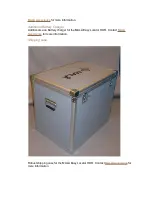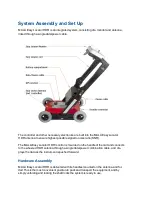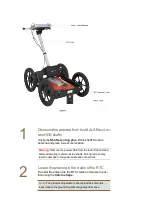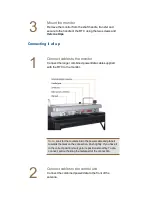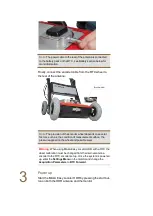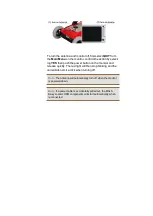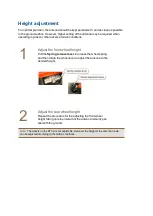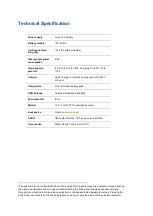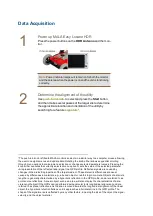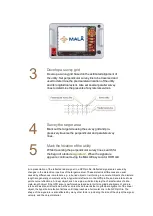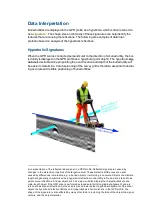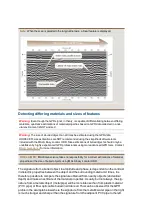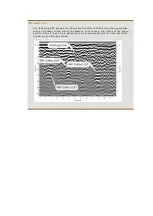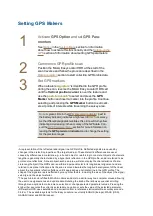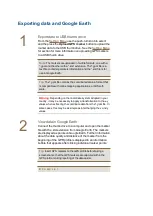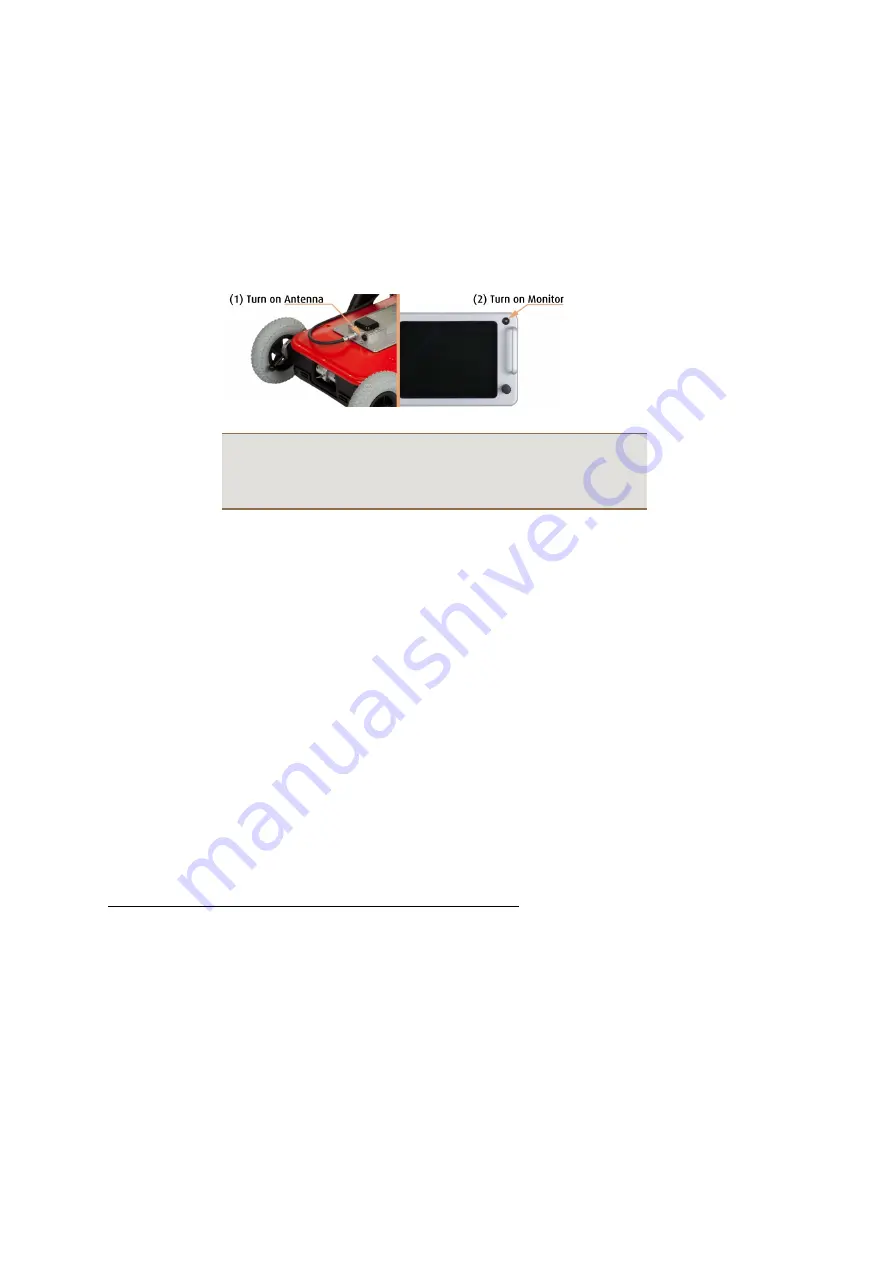
Data Acquisition
1
Power up MALÅ Easy Locator HDR
Press the power buttons on the
HDR Antenna
and the mon-
itor.
Note:
Power indicator lamps will remain on for both the monitor
and the antenna when the power is on and the unit is functioning
correctly.
2
Determine the alignment of the utility
Use
push-turn knob
1
to select and press the
Start
button,
and then make several passes of the target site to determine
the approximate location and orientation of the utility by
searching for a feature
signature
2
.
1
The push-turn knob is fitted to MALÅ monitors and acts in a similar way to a computer mouse allowing
the user to navigate menus and update data. Rotating the knob either allows sequential scrolling
through menu options to make a menu selection or changes selected parameter values. Pressing the
knob either executes the currently selected menu option or sets the value of the selected parameter.
2
A representation of the reflected radar signal in a GPR profile. Reflected signals are caused by
changes in the dielectric properties of the target medium. These dielectric differences are usual
caused by differences in materials, e.g., a buried object or reinforcing in concrete. Objects of a discrete
length are generally characterized by a hyperbolic reflection in the GPR profile, and are referred to as
point source reflections. A linear object, such as a pipe, will also display the characteristics of a dis-
crete-length object if the GPR scan is performed perpendicular to its longitudinal alignment, and are
referred to as planar reflections. As the scan is moved towards the longitudinal alignment of the linear
object, the hyperbolic refection flattens until it approaches a horizontal line in the GPR profile. The
shape of the signature is also affected by many other factors, including the size of the object, the signal
velocity, and the object material.


